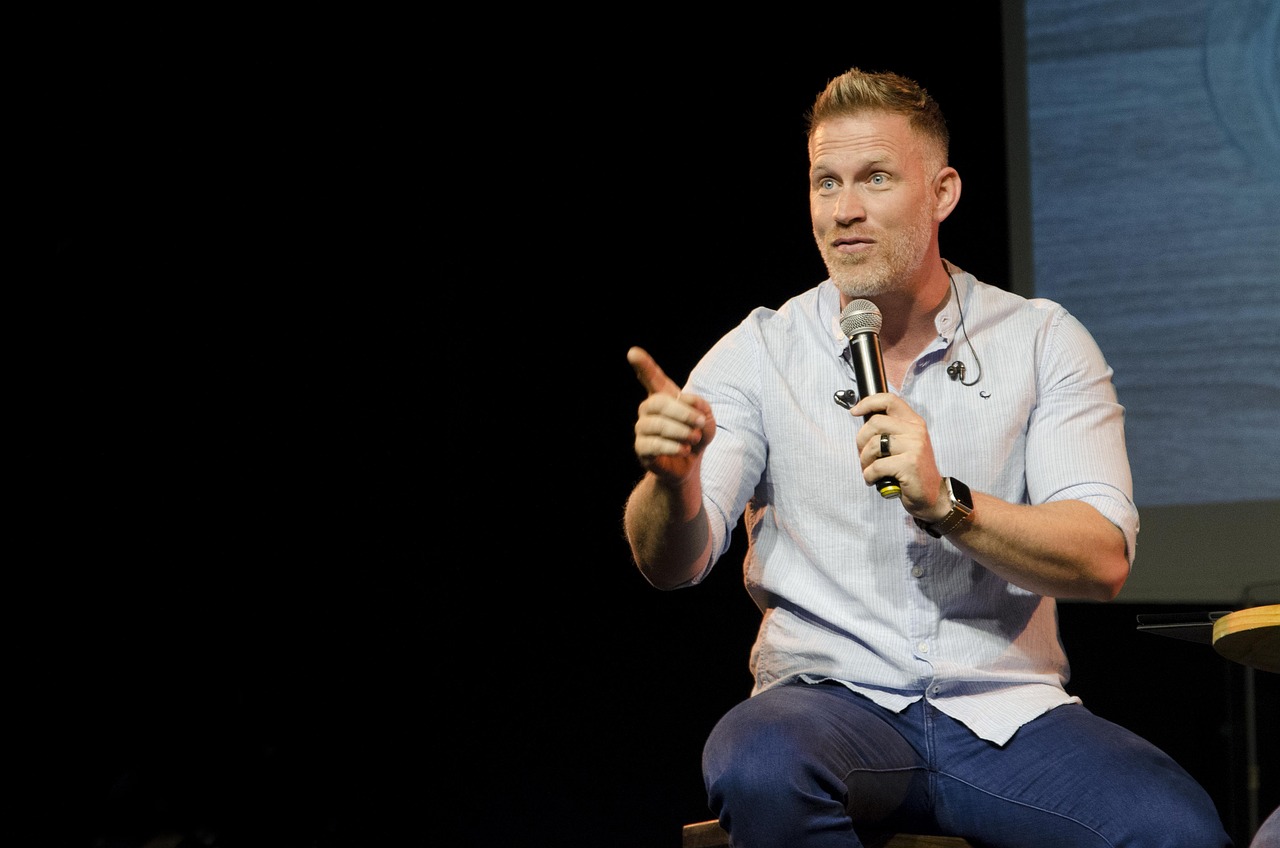Mastering effective communication skills isn’t about having all the right words at the perfect moment—it’s about expressing ourselves clearly, listening actively, and engaging with others in a meaningful way. When we learn the art of speaking with confidence, we not only boost our self-assurance but also build stronger connections, open up new opportunities, and navigate social situations with ease.
We’ve all had moments where we hesitated before speaking, second-guessed ourselves, or walked away from a conversation wishing we had said something differently. Confidence in communication isn’t something we’re born with—it’s a skill we develop over time. By focusing on key communication techniques like active listening, body language, and clarity, we can improve the way we interact with others and feel more at ease in conversations. In this post, we’ll break down the essential steps to becoming a more confident speaker and an effective communicator.
The Key Elements of Effective Communication
Mastering effective communication skills doesn’t happen by accident. It involves a combination of active listening, clear speech, and strong nonverbal cues. These elements work together to help us express ourselves more effectively, engage in meaningful conversations, and build strong personal and professional relationships. When we develop these communication techniques, we become more persuasive, more respected, and better able to connect with those around us.
One of the biggest mistakes people make is thinking that confidence in communication means talking more or louder. In reality, confident speakers focus on quality over quantity—they listen as much as they speak and ensure their words are impactful.

Active Listening: The Secret to Stronger Connections
Many of us think communication is about talking, but how to improve conversation skills starts with listening. The best communicators are actually great listeners. When we listen actively, we engage with the speaker in a way that makes them feel heard, valued, and understood. This is especially important in high-stakes conversations—whether we’re navigating a disagreement with a loved one, discussing career goals with a manager, or networking with new people.
But how often do we truly listen? Most of us are guilty of waiting for our turn to speak instead of focusing on what the other person is saying. Active listening requires us to be fully present. This means putting away distractions (like our phone), maintaining eye contact, and offering verbal affirmations like “I see what you mean” or “That makes sense.”
Think about a time when you were talking to someone who was clearly distracted—maybe they kept glancing at their phone or responding with half-hearted “uh-huhs.” How did that make you feel? Now compare that to a conversation where someone was fully engaged, nodding along, asking follow-up questions, and making you feel truly heard. Which conversation felt more meaningful? The difference is active listening—and it’s a skill we can all practice and improve.
The Power of Reflective Listening
One of the best ways to show that we’re truly engaged is through reflective listening—an essential communication technique where we repeat key points to confirm understanding. For instance, if a coworker says, “I feel like my contributions in meetings aren’t being acknowledged,” a response could be, “Sounds like you’re not feeling valued and want more recognition for your ideas—right?” This simple act of reflecting on what we hear reassures the speaker that their words matter and helps prevent misunderstandings.
Another component of active listening is reading between the lines. Not all communication is verbal—sometimes, a person’s body language, facial expressions, or tone tell us more than their words. If a friend says, “I’m fine,” but their arms are crossed and their voice is tense, we know something deeper is going on. A confident speaker picks up on these subtle cues and responds with empathy.

Speaking with Clarity and Brevity
Many of us have been in situations where we rambled, over-explained, or filled our speech with filler words like “um,” “like,” or “you know.” This can make us sound unsure and affect our ability to be a confident speaker. The most confident communicators know that less is often more—clear, concise speech is far more effective than long-winded explanations.
So, how do we achieve clarity? Preparation is key. Before an important conversation or presentation, it helps to outline our key points and practice delivering them succinctly.
Instead of:
“Well, I think there are a lot of different ways we could go about this, and it kind of depends on the situation, but maybe we should consider…”
We can say:
“One approach that could work well is focusing on X because it aligns with our goals and resources.”
This doesn’t mean our responses should be robotic—it simply means being intentional with our words.
Avoiding Jargon and Speaking Simply
Another key part of mastering effective communication skills is eliminating jargon and overly complex language. In professional settings, we often use industry-specific terms that may not be clear to everyone. If we want to be effective communicators, we should speak in a way that anyone can understand.
Imagine explaining your job to a 10-year-old. Instead of using technical terms, we’d naturally break things down into simple, relatable ideas. This is how we should aim to communicate in everyday conversations—whether we’re talking to a colleague, friend, or stranger.
Finally, one of the best ways to enhance clarity is by using examples and stories. People remember stories far better than abstract concepts. If we’re explaining a difficult idea, sharing a real-world example can make it more tangible and relatable.
Mastering Nonverbal Communication
When it comes to speaking with confidence, what we say is just as important as how we say it. Nonverbal communication plays a huge role in how our message is received. Studies suggest that body language, facial expressions, and tone of voice account for over 70% of communication—meaning people often pick up on our confidence (or lack of it) before we even say a word.
The Impact of Body Language on Confidence
Let’s start with body language. If we want to know how to be a confident speaker, we must first pay attention to how we present ourselves. Body language can either reinforce or contradict our words. When we stand or sit with an open posture, we appear more confident and approachable. On the other hand, slouching, crossing our arms, or avoiding eye contact can make us seem disinterested or closed off. If we want to project confidence, we should stand tall, relax our shoulders, and face the person we’re speaking to directly.

Making Eye Contact Without Feeling Uncomfortable
Eye contact is another crucial element of confident communication. Maintaining steady, natural eye contact shows that we are engaged and self-assured. However, many of us feel uncomfortable making direct eye contact for long periods. A simple trick is to look at the space between the person’s eyebrows—this gives the illusion of eye contact while feeling less intimidating.
Picture speaking with someone who constantly looks down at their phone or shifts their gaze around the room. It would likely make us feel unimportant. Now, picture someone who makes consistent eye contact, nods along, and reacts to what we’re saying—this kind of engagement makes conversations feel much more meaningful.
How Tone of Voice and Pacing Affect Communication
Finally, let’s talk about tone of voice and pacing—two critical communication techniques that affect how others perceive us. When we speak too quickly, we may come across as nervous or uncertain. Slowing down our speech and adding natural pauses makes us sound more confident and gives our words more weight. A good way to practice this is by recording ourselves speaking and listening back to our tone.
By mastering these nonverbal elements—body language, eye contact, and vocal delivery—we can instantly elevate our communication skills and come across as more confident, even if we’re still working on our verbal delivery.
Communication is a Journey, Not a Destination
Becoming a confident communicator doesn’t happen overnight, but with practice and self-awareness, we can make huge strides. The key is to listen actively, speak with clarity, and be mindful of our body language.
Every conversation is an opportunity to improve. So let’s start today—whether it’s striking up a casual chat with a stranger, speaking up in a meeting, or having an honest talk with a loved one. The more we step outside our comfort zone, the more confident we’ll become.
Join the Conversation!
What’s one communication challenge you’re working on? Drop a comment below and let’s chat about it! And if you found this helpful, share it with someone who could use a confidence boost in their conversations.
Discover more from Focused Expansion
Subscribe to get the latest posts sent to your email.




